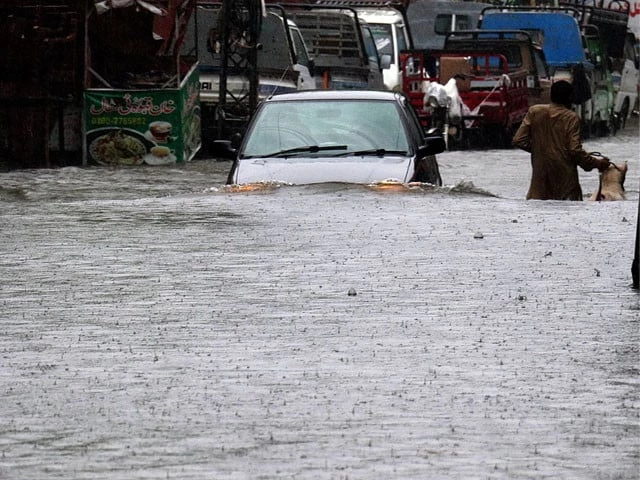Pakistan is bracing for a shift in the weather as heavy rains are expected over the coming days, with authorities warning of potential flooding in some regions. Director General of the Provincial Disaster Management Authority, Irfan Ali Kathia, issued a detailed briefing on the current weather and flood situation.
“From the 5th of this month, rain is expected from Rawalpindi to Lahore, and it could be heavy,” said DG Irfan Ali Kathia.
Light rain is expected in various districts of Punjab on Saturday (today), while southern Punjab is also likely to see rainfall on Sunday (tomorrow), averaging 10-15mm. “Tomorrow, the intensity of rain will be more than today’s, averaging 30-35mm.”
Read: Floods claim 1,006 lives, including 275 children
The Punjab Provincial Disaster Management Authority (PDMA) warned that rainfall on October 06 will be heavier in north, north-eastern, and central Punjab, with 50-70mm expected, while showers on October 07 could be even more intense. “Residents in vulnerable areas should remain alert and take precautions,” Kathia urged.
Light showers have already brought relief to cities like Lahore, while the Potohar region and northeastern Punjab—including Rawalpindi, Murree, Chakwal, and Gujrat—are expected to see intermittent rain and thunderstorms until October 7. Meteorologists predict alternating hot, dry spells and sudden bursts of rain through early October.
Rawalpindi and Islamabad experienced their first heavy winter rain on October 03, ending a six-week dry spell and breaking the intense heat and humidity. “The sudden chill prompted residents to bring out warm clothing and blankets,” said a local resident. Streets saw motorcyclists wearing sweaters, and vendors quickly set up stalls selling winter favourites such as peanuts and roasted chickpeas.
Rising waters raise flood alarm
The floods continue to affect 27 districts across the country. Punjab’s recent floods affected 4,795 villages in 28 districts, impacting over 407,000 people and forcing the evacuation of more than 612,800 residents along with 2 million animals.
Across South Punjab, 331 relief camps house around 106,000 people, supported by 425 medical camps and mobile clinics.
The floods damaged 2.58 million acres of farmland, with Gujrat and Faisalabad suffering the worst crop losses, including significant damage to maize, rice, sugarcane, and cotton.
At Head Marala, the Chenab River is carrying 20,000 cusecs, with an additional 100,000 cusecs expected from India in the next 48 hours due to upstream silt-flushing operations at Dulhasti.
Marala’s current outflow is 23,000 cusecs, while Mangla Dam reports high water levels. The Sutlej may receive 50,000 cusecs from India, and could release 35,000 cusecs into the Ravi River.
PDMA teams are actively surveying affected areas. “Currently, 11,500 personnel across 27 districts are engaged, including officers from the Pakistan Army and local administrations,” Kathia said.
Read More: Rain brings relief to Lahore
A total of 2,213 teams are conducting ground assessments, monitored in real time through an online dashboard. Surveys in 69 tehsils are expected to be completed by October 27.
To support flood victims, Bank of Punjab booths are being set up in all tehsils. Following the distribution of relief cards, 50,000 people have already received immediate assistance. PDMA, in collaboration with Punjab Information Technology Board (PITB), has launched a platform to address survey-related complaints, ensuring resolution within seven days.
“The current floods have caused greater damage than all previous events, including losses of homes, livestock, and lives,” said DG Irfan Ali Kathia. Over the past 15 years, Rs51 billion has been provided to flood-affected communities.
Pakistan has witnessed significant flood events in recent years. In 2010, over 350,000 people were affected; in 2012, 38,196 people; and in 2014, more than 359,000, with Rs14 billion distributed. In 2022, 56,000 people were affected, and Rs10 billion was disbursed.

